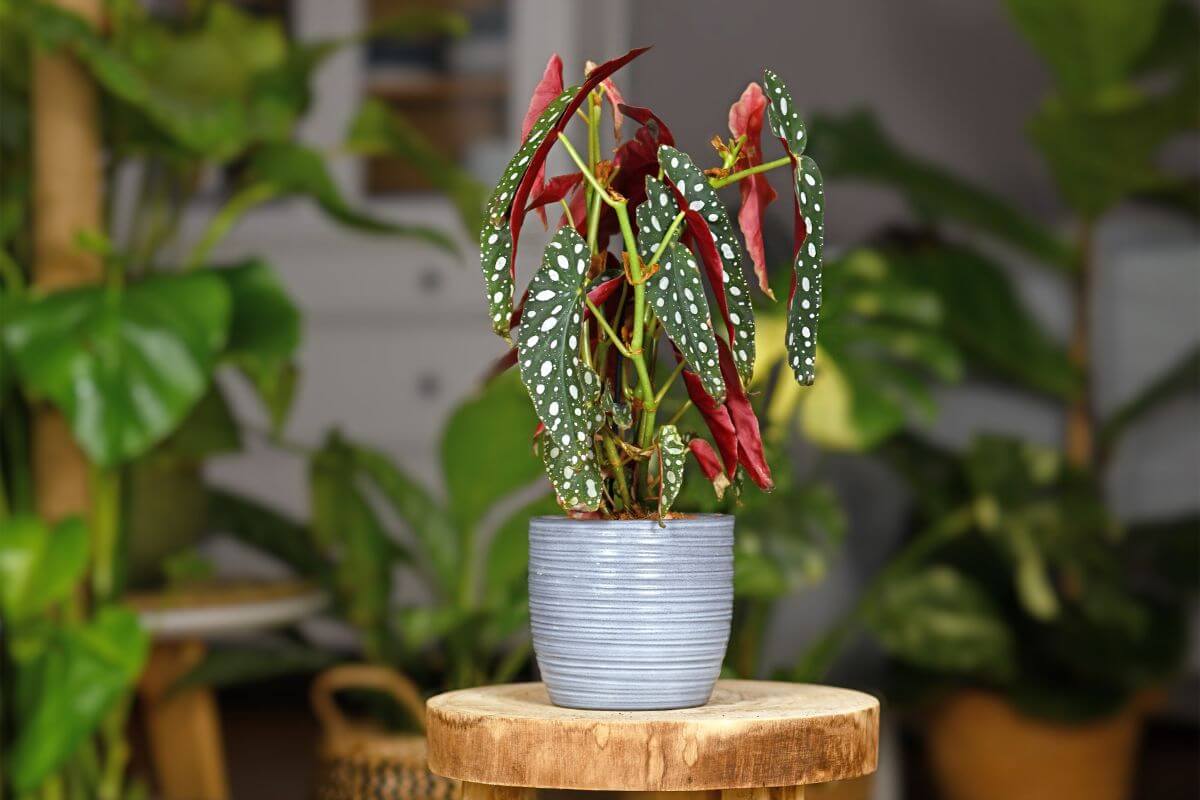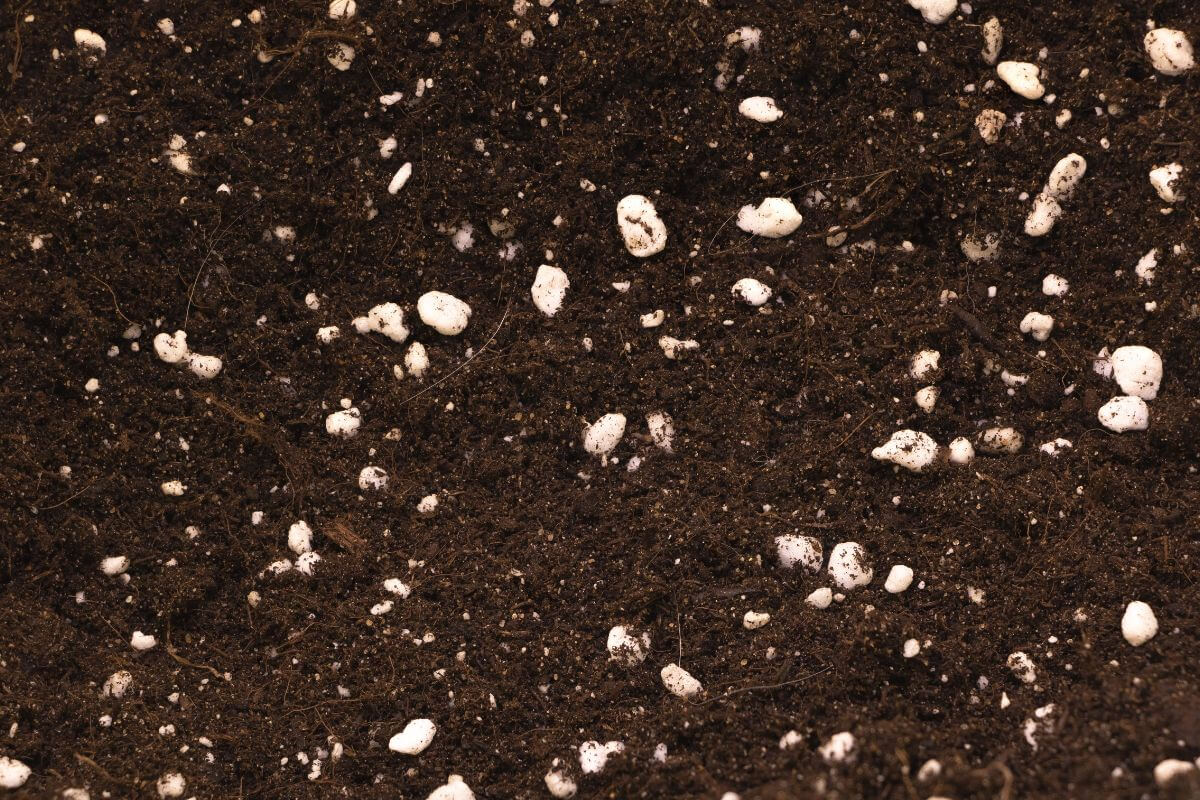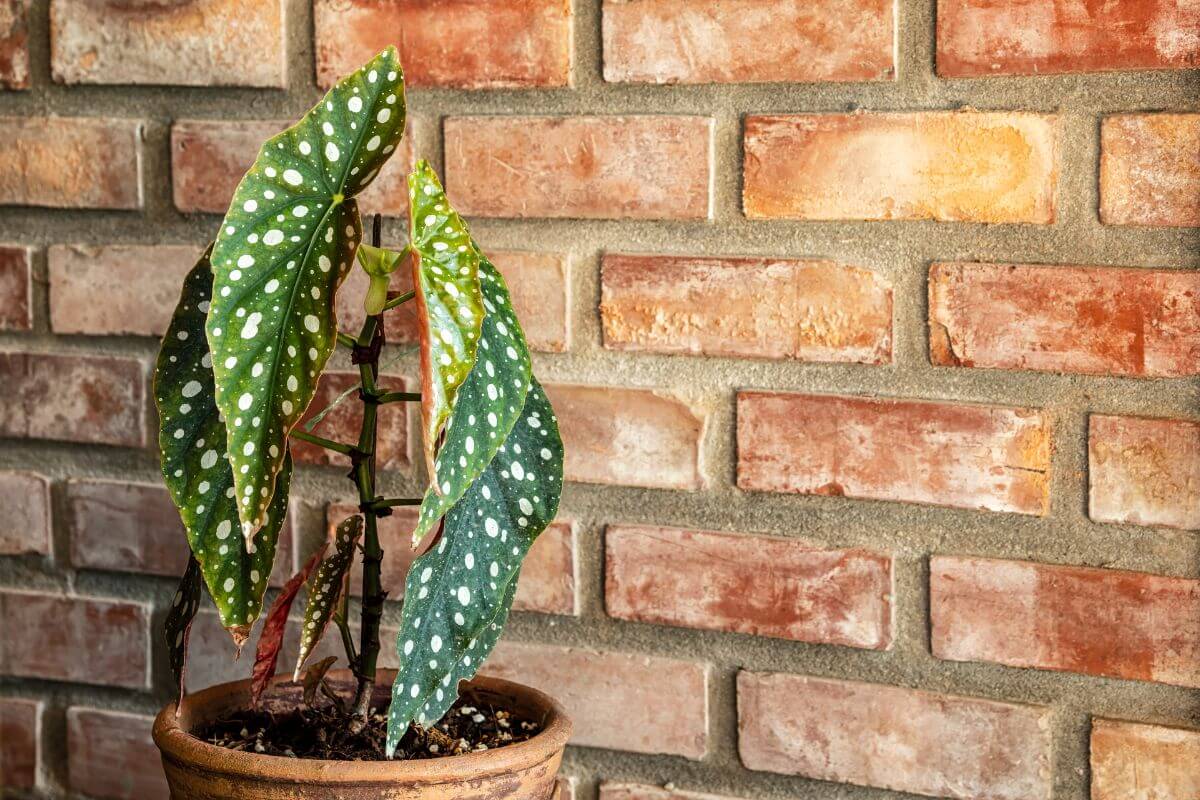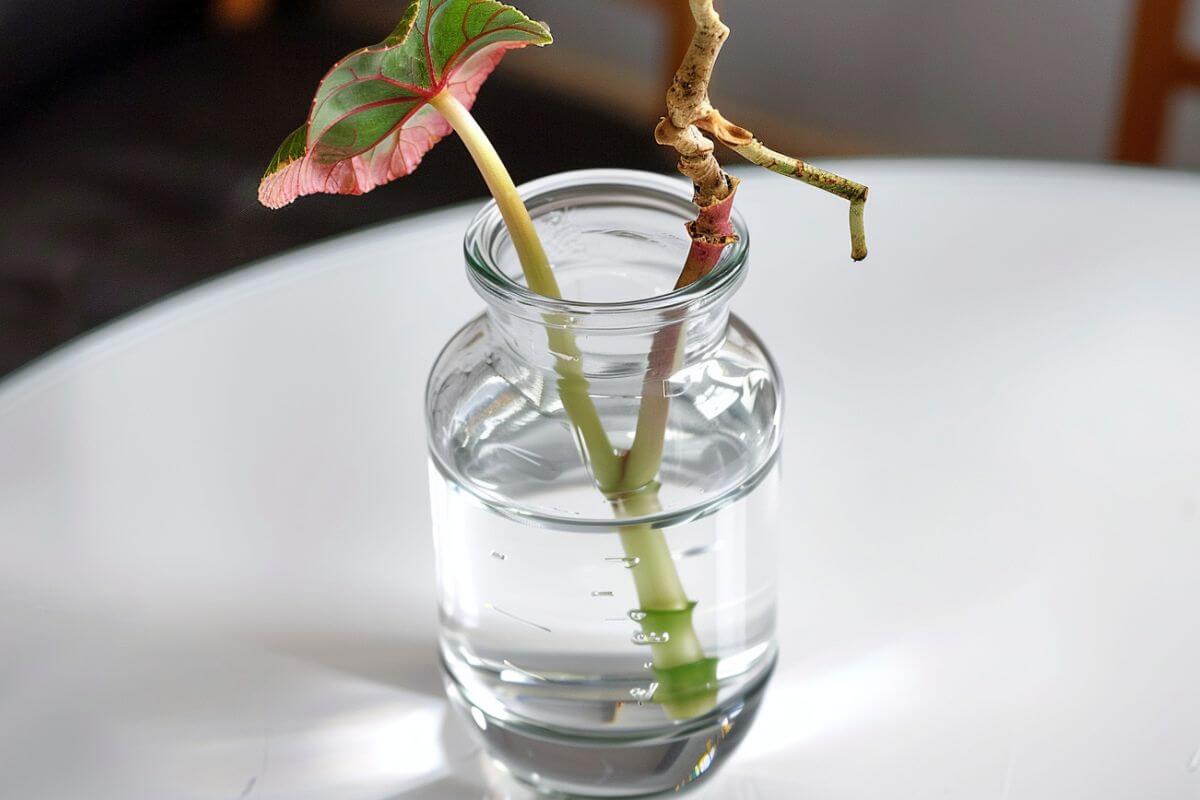The Angel Wing Begonia might be the perfect pick for adding a splash of life into your space. With its striking, wing-shaped leaves and vibrant flowers, this plant not only beautifies your home but also tells a tale of resilience and beauty from its origins in Brazil and South America.
In this guide, you’ll discover everything you need to know to keep your begonia thriving. From the ideal soil mix to the perfect light conditions and how to tackle common pests, I’ve got you covered. You’ll learn the secrets to making your begonia bloom beautifully and stay lush all year round.
Ready to see your Angel Wing Begonia reach its full potential? Let’s dive into the care tips that will help you nurture this stunning plant, ensuring it remains a focal point of beauty in your home.
7 Key Takeaways on the Angel Wing Begonia
- Angel Wing Begonias are easy to care for, requiring well-drained soil, regular watering, and bright indirect light.
- In winter, keep Angel Wing Begonias indoors, lightly watered, and protected from temperatures below 50°F.
- Angel Wing Begonias can grow outside but need shade and consistent moisture to avoid root rot.
- Use a balanced fertilizer with equal parts nitrogen, phosphorus, and potassium, diluted to half-strength, bi-weekly.
- To keep Angel Wing Begonias bushy, pinch off flower buds and prune regularly to encourage branching.
- These begonias thrive in humidity levels between 40% and 60%, benefiting from occasional misting.
- Curling leaves may indicate a lack of nutrients, insufficient light or temperature, or insect damage.
Angel Wing Begonia Overview

Angel Wing Begonias are super easy to grow. They come from Brazil and South America and belong to the Begoniaceae family. The scientific name is Begonia aconitifolia x coccinea. Eva Kenworthy Gray made these hybrids in 1926 at her home in California.
There are over 1500 known begonia species, including cane begonias, and the angel wing variety has many hybrids due to extensive breeding.
These begonias have long stems with leaves and flowers growing from the joints. Their big, dark green leaves, shaped like angel wings, have silver speckles and red undersides. They can grow really large, so it’s good to stake them for support to prevent damage.
Under the right conditions, they can reach up to 10 feet tall. The heart-shaped leaves are stunning, with metallic or frosty silver spots on top and deep purple or red underneath. They bloom clusters of flowers in red, pink, orange, or white from late winter to fall. The flowers hang down and are heavy, making the plant even more beautiful.
However, be careful if you have pets. Begonias are toxic to cats and dogs because they have soluble calcium oxalates. If your pet eats any part of the begonia, look for signs like too much drooling or vomiting. Contact your vet or a poison control center right away if this happens.
Angel Wing Begonia Plant Care Guide
To help your Angel Wing Begonia flourish, it’s important to nail down the right conditions. Let’s dive into the essentials: perfect soil, ideal light, and other must-haves. Getting these factors right is key to a healthy, vibrant plant.
Soil Requirements for the Angel Wing Begonia

Angel Wing Begonias love soil that drains well and is packed with organic matter. To make a great potting mix, I mix regular potting soil with perlite or coarse sand. This mix helps the water flow through and keeps the roots from sitting in water, which can cause root rot.
I make sure the soil stays moist but not too wet. It’s perfect if the top inch of soil dries out between waterings. For planting, I choose a terracotta or clay pot instead of plastic. These materials help draw away extra moisture, keeping my begonia happy and healthy.
If you’re growing African Violets, you can also use an African Violet soil mix. They can also be cultivated in soilless mediums as long as they are rich in organic matter.
- Learn more: Guide to African Violet Care
Light Requirements for the Angel Wing Begonia

Angel wing begonias thrive in bright, indirect light throughout the year. Direct sunlight can scorch their leaves, but they’re a bit tougher than many other indoor plants, including other begonias.
When they get the right light, the colors of their leaves and flowers become more vibrant. You can also grow them outside during spring and summer, just make sure they’re in a shady spot to protect them from direct sun. They can adapt to lower light but might get leggy and have fewer flowers.
If natural light isn’t enough, think about using artificial grow lights for the best growth. If you’re focusing on growing the leaves and want fewer flowers, keep the plant in a shaded area. Too much strong light can cause the leaves to brown.
Temperature Requirements for the Angel Wing Begonia
When growing the angel wing begonia indoors, keep your indoor temperature moderate and set it between 65° and 75° Fahrenheit.
Keeping your plant safe from cold is important. Temperatures below 50° F can be deadly for it. Here are some tips to ensure your plant stays healthy:
- Avoid Cold Spots – Don’t place your plant near doors, windows, or air vents where drafts are common.
- Watch for Temperature Changes – Sudden changes in temperature can harm the plant. Try to keep the environment stable.
- Nighttime Cooling – A slight drop in temperature at night, between 10° and 15° Fahrenheit, can actually help the plant bloom better. This change mimics what they experience in nature.
By following these guidelines, you can help your plant thrive even in less-than-ideal conditions.
Water and Humidity Requirements for the Angel Wing Begonia
Taking care of Angel Wing Begonias means getting the moisture levels just right. I learned that these plants like a good drink, but only when the top inch or two of their soil is dry. It’s a bit like waiting for your favorite dessert to cool down before you dive in.
Overwatering is a big no-no since these plants don’t like their roots sitting in water all the time. Instead of setting a strict watering day, I check the soil with my finger or a moisture meter. When I do water, I make sure to soak them until I see water coming out of the pot’s bottom.
Using room-temperature water seems to make them happy. I’ve found that bottom watering works great too. It keeps the leaves dry, which is good because wet leaves can get sick.
In winter, I water them less often because they don’t need as much. It’s all about keeping an eye on the soil to see what they need.
Angel Wing Begonias love humidity, around 40% to 60%. If I see brown tips on the leaves, it’s a sign they want more moisture in the air. To help with that, I put a tray of pebbles and water under the pot or use a humidifier if the air is really dry.
I also learned to keep the leaves dry when I water them to avoid problems like Leaf Spot Disease or Powdery Mildew. Good airflow around the plant helps keep it healthy too.
Fertilizer for the Angel Wing Begonia
Fertilizing Angel Wing Begonias right helps them grow a lot during spring to fall. I found out that using a balanced fertilizer, like 10-10-10 or 20-20-20, works wonders. This means it has equal parts of nitrogen, phosphorus, and potassium. The trick is to mix it to half the strength they say to use. I do this every two weeks, and wow, the leaves and flowers are so healthy and bright!
Some folks, like me, like to use a bit more nitrogen. It makes the leaves super lush. If you want more flowers, a fertilizer with extra potassium does the job.
There’s also the “weakly weekly” way. You use a tiny bit of fertilizer every week for a month, then take a week off. This helps clean out any salt that builds up.
When winter comes, I cut back. Sometimes I just fertilize once a month. Always remember to fertilize when the soil is a bit wet. This stops the leaves from burning. And be careful not to give too much fertilizer. It can hurt the plant.
Following these tips, I’ve seen noticeable growth in my Angel Wing Begonias. They’re healthier and more beautiful than ever!
How to Prune and Repot Angel Wing Begonias
Pruning and reporting are essential to growing thriving angel wing begonias. Here’s how to approach these two important tasks when it comes to this plant.
To prune your angel wing begonia, follow these steps:
- Wait until the plant is one year old.
- In winter and late spring, prune the plant drastically down to about 6 inches.
- During the active growing seasons (spring and summer), use clean, sharp scissors or pruning shears.
- Cut the stems back to a leaf node to encourage new side growth.
- Avoid removing more than a third of the plant during any pruning session to prevent shock.
Here’s a step-by-step guide for repotting your begonias:
- Repot your begonias in spring or summer.
- Use a well-draining mix, such as a commercial potting mix or a blend of loam, peat moss, sand, and compost, to prevent waterlogging and root rot.
- Opt for clay or terracotta pots as they dry out faster than plastic pots, reducing the risk of overwatering.
- Do this whenever the plant outgrows its pot to ensure continued healthy growth and prevent overcrowded roots.
How to Propagate the Angel Wing Begonia

Select a vibrant stem that is 4-6 inches long with several leaves attached. Use clean, sharp pruning shears to make the cut just below a node (where leaves emerge from the stem).
Then, remove the lower leaves, leaving 2-3 leaves at the top. Trim off any stem below the lowest node.
After removing the leaves, dip the cut end in rooting hormone powder or liquid to speed up the rooting process, though this step is not required.
Then choose your propagation method:
Water propagation for the Angel Wing Begonia:
- Place the cutting in a clear glass jar with clean, de-chlorinated water.
- Ensure only the stem is submerged, keeping the leaves above water.
- Change the water every 2-3 days.
Soil propagation for the Angel Wing Begonia:
- Use a well-draining potting mix.
- Make a hole in the soil and insert the cutting.
- Gently press the soil around the stem.
Keep the cutting in bright, indirect light. Maintain temperatures between 75°-80°F (24°-27°C). Ensure high humidity by covering with a clear plastic bag or using a humidity tray.
For water propagation, watch for root development, usually visible within 2-3 weeks. For soil propagation, keep the soil consistently moist but not waterlogged. Be patient, as it can take up to a month for roots to develop.
Once roots are 1-2 inches long, transplant the cutting into a pot with well-draining soil. Continue providing appropriate light, water, and humidity as the new plant establishes itself.
Angel Wing Begonia Common Plant Pests and Diseases
The angel wing begonia is susceptible to common houseplant pests including whiteflies, aphids, spider mites, and mealybugs.
If you see an insect infestation, isolate the begonia and treat it with insecticidal soap, or an organic insecticide such as neem oil. Repeat treatment until there are no more signs of the pests.
Should you notice Leaf Spot Disease, treat your begonia with a fungicide or try a homemade remedy of a tablespoon of baking soda with two teaspoons of mineral oil. Add to a spray water bottle and shake, mixing well before spraying the entire plant.
Different Begonia Varieties
Aside from Angel Wing Begonia, there are also other popular begonia varieties Here are different types of Begonias:
- Begonia ‘Gryphon’ – This variety features leathery leaves with silver splotches and a deep red underside. It is known for its attractive foliage and is a favorite among collectors.
- Begonia ‘Orange Rubra’ – Recognized for its scented orange blooms, this variety adds a unique touch to any collection.
- Begonia maculata ‘Wightii’ – Notable for its white flowers and distinctive spotted leaves, making it visually appealing.
- Begonia Albo-Picta ‘Rosea – This type of begonia is commonly found in various regions, this variety has large, ruffled leaves that can grow significantly, often exceeding the size of a person’s head.
Angel Wing Begonia Care Final Thoughts
I find angel wing begonias easy to grow. They add a splash of color to any home or office with their beautiful flowers. They don’t need much, but a little care goes a long way.
To help these plants thrive, focus on the essentials: soil, water, humidity, and light. Also, make sure to repot and prune them properly. And remember, enjoy their beauty as long as you can.
Angel Wing Begonia Care FAQs
1. How Do You Care for an Angel Wing Begonia?
Angel wing begonias are easy to grow. They prefer well-drained soil rich in organic matter. Water regularly during the growing season, keeping the soil moist but not soggy. Angel wing begonias do best in bright indirect light and moderate temperatures.
2. How Do You Take Care of Angel Wing Begonias in the Winter?
In the winter, care for angel wing begonias indoors. You can take the plants outside for bright, indirect light in the morning and afternoon if temperatures are 60°F or above. Do not expose the roots to cold air. Keep the plants lightly watered and fertilized throughout the winter months because they don’t go dormant. If frost threatens, cover the pots with plastic wrap and remove the wrapping once the weather warms up again.
3. Can Angel Wing Begonias Grow Outside?
Yes, angel wing begonias can tolerate outdoor conditions. Avoid direct sunlight and place them under shade cloth or trees. The main issue is root rot from overwatering, so keep them evenly moist. If the weather in your area drops below 50°F in the winter, you may want to bring them indoors.
4. What Kind of Fertilizer Does an Angel Wing Begonia Like?
Angel wing begonias prefer liquid fertilizers with equal parts nitrogen, phosphorus, and potassium (NPK) of 10-10-10, diluted to half-strength. Feed your plant bi-weekly in late winter or early spring.
5. How Do You Keep an Angel Wing Begonia Bushy?
To keep angel wing begonias bushy, pinch off flower buds as soon as they appear. Pinching and pruning encourage more branching growth. As you prune, the plant will grow back more compact and bushy.
6. Should I Mist My Angel Wing Begonia?
Yes, angel wing begonias love humidity and warm climates, so misting is beneficial. Mist every 1-2 weeks during hot summer days.
7. Why Do the Begonia Leaves Curl?
Begonia leaves may curl due to a lack of nutrients. Insufficient light and temperature can also cause curling. Insect damage is another possible reason for curling leaves.
Learn about other houseplants you can add to your home in these articles:



